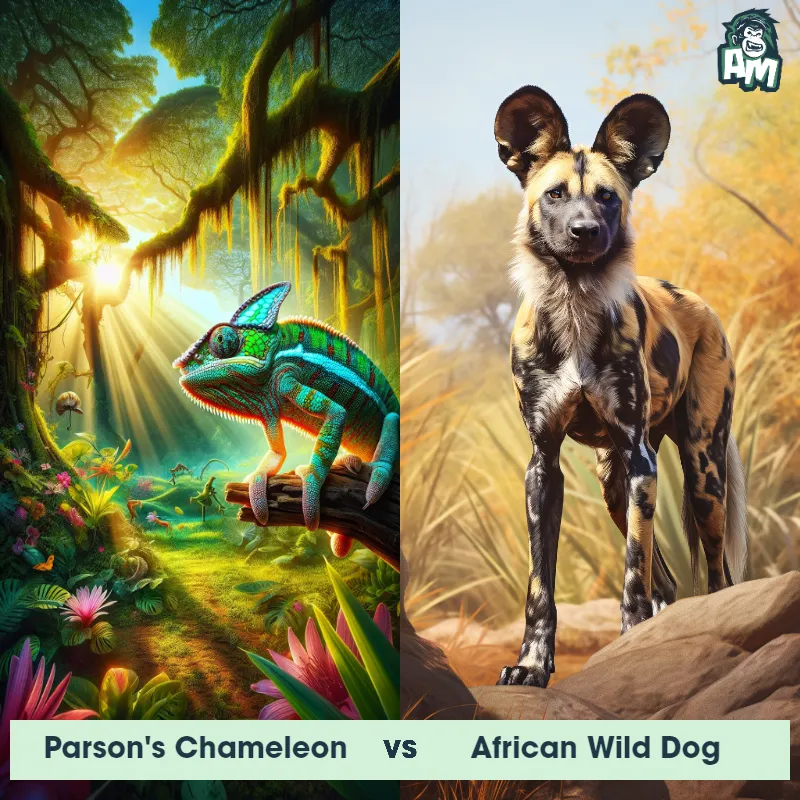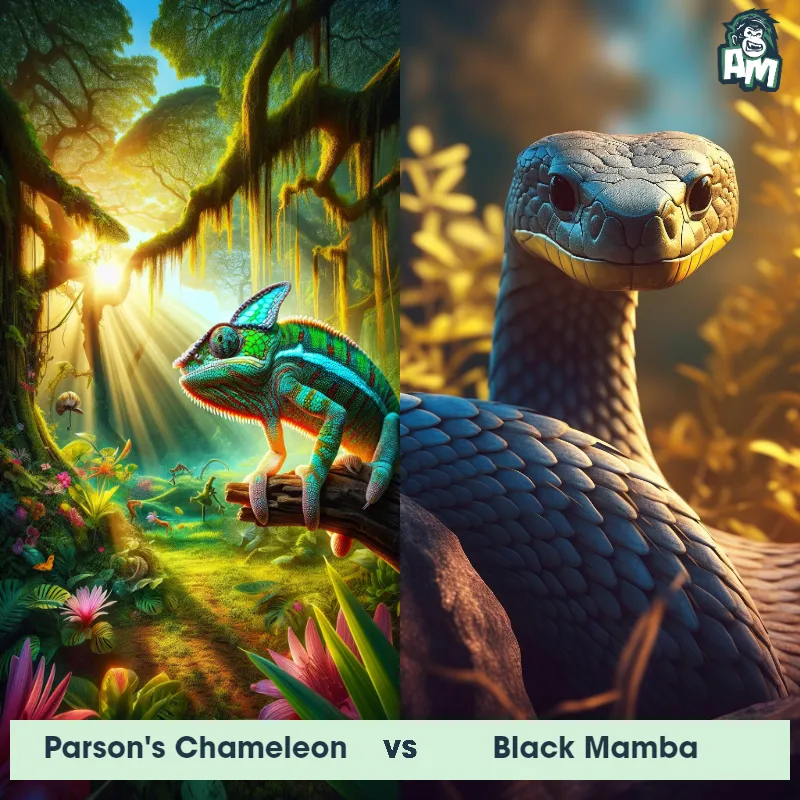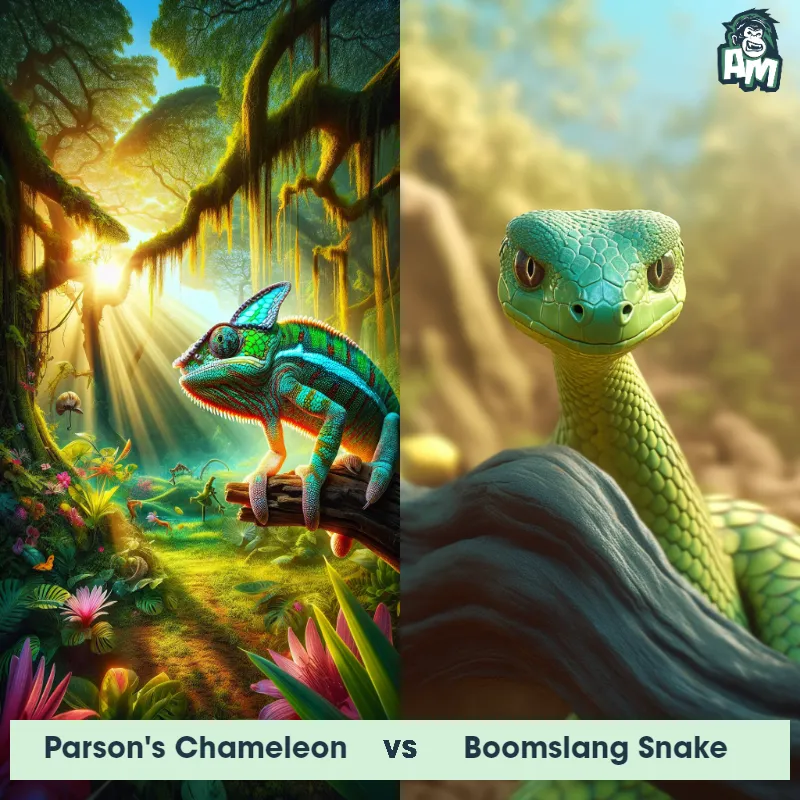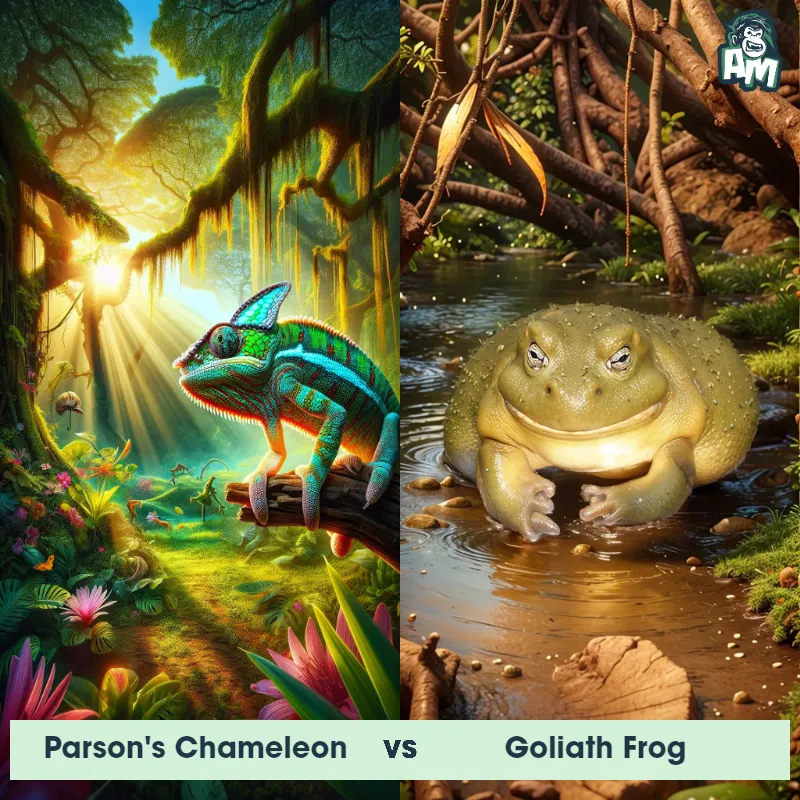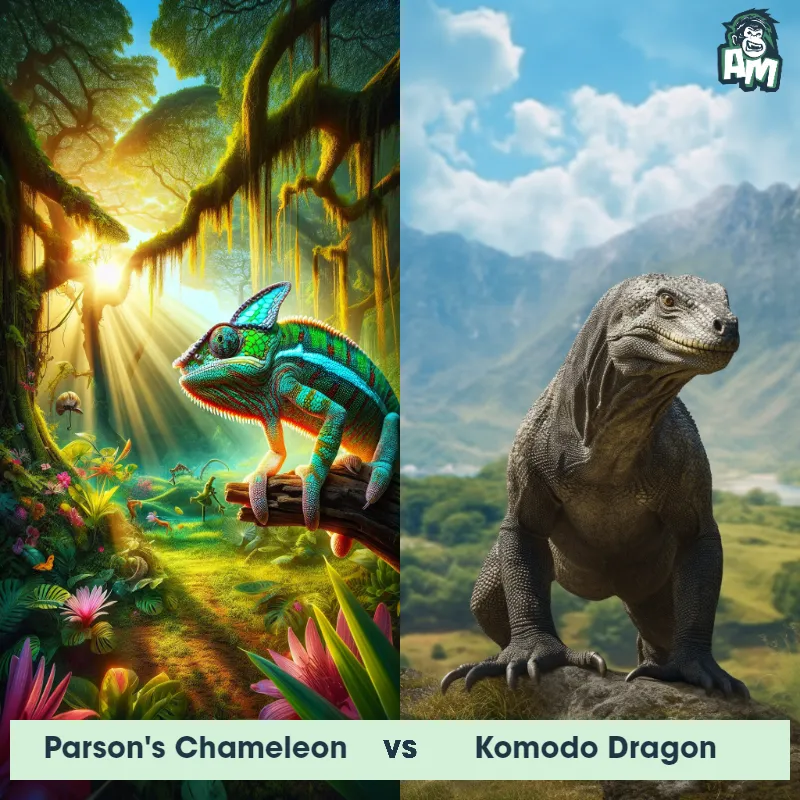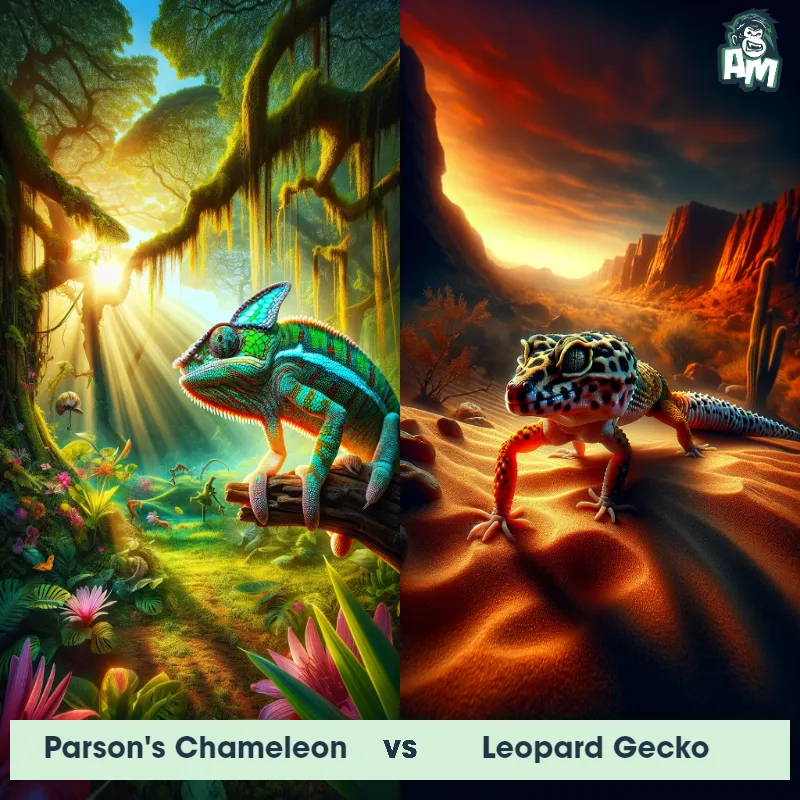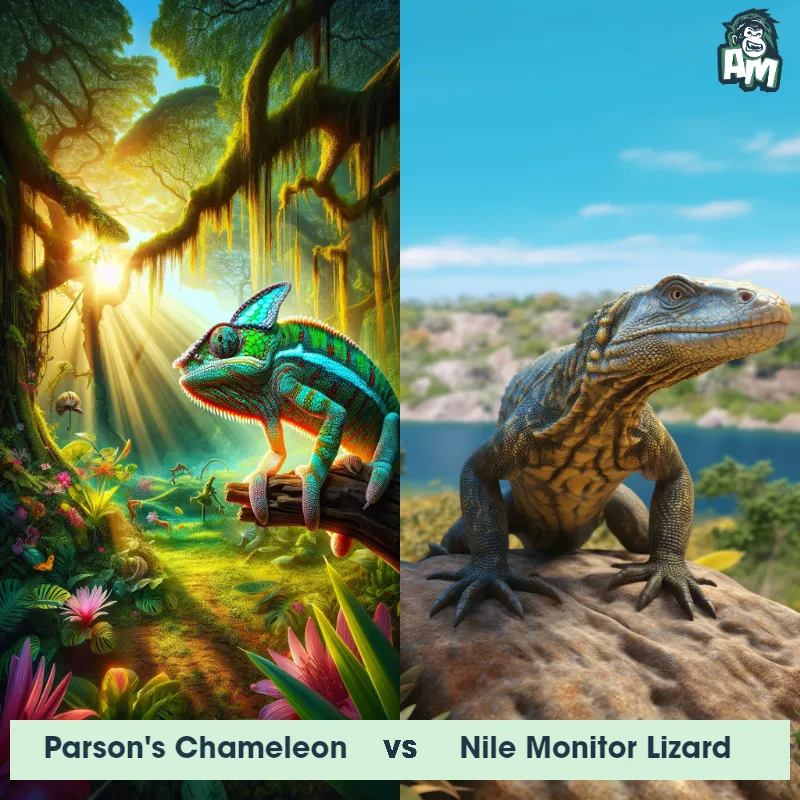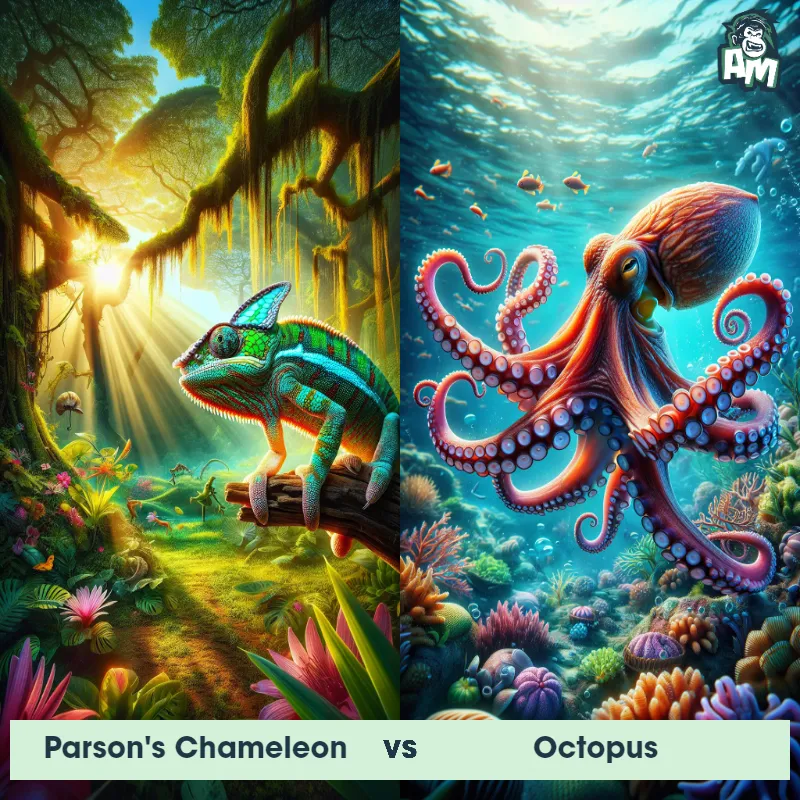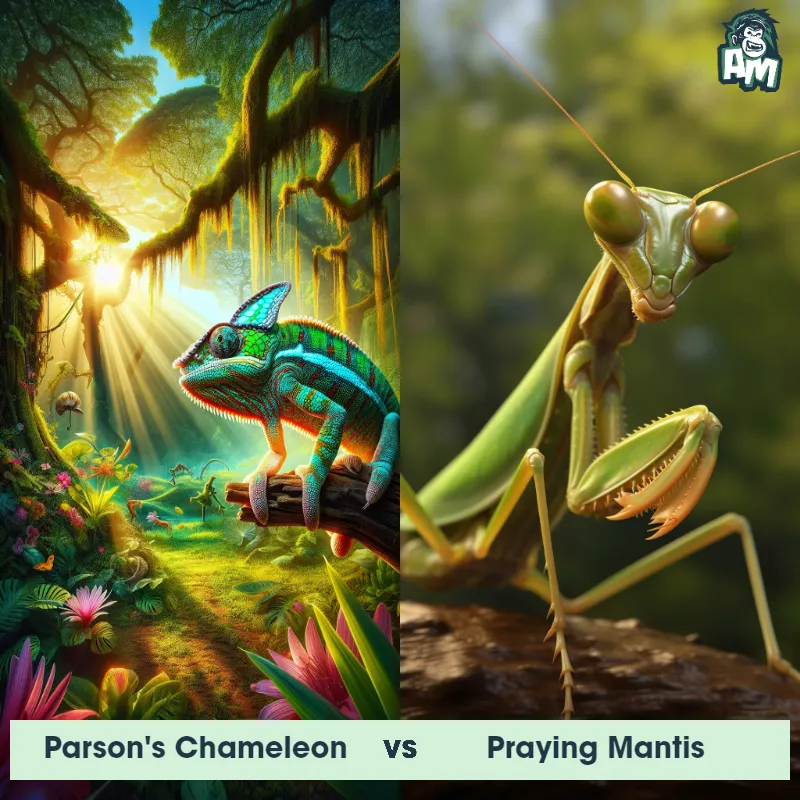The Parson's Chameleon
The Parson's Chameleon is one of the largest chameleon species, known for its vibrant colors ranging from bright green to deep blue. It has large, independently rotating eyes, a long tongue used for catching prey, and a distinctive casque on its head. This species is native to humid rainforests in Madagascar.
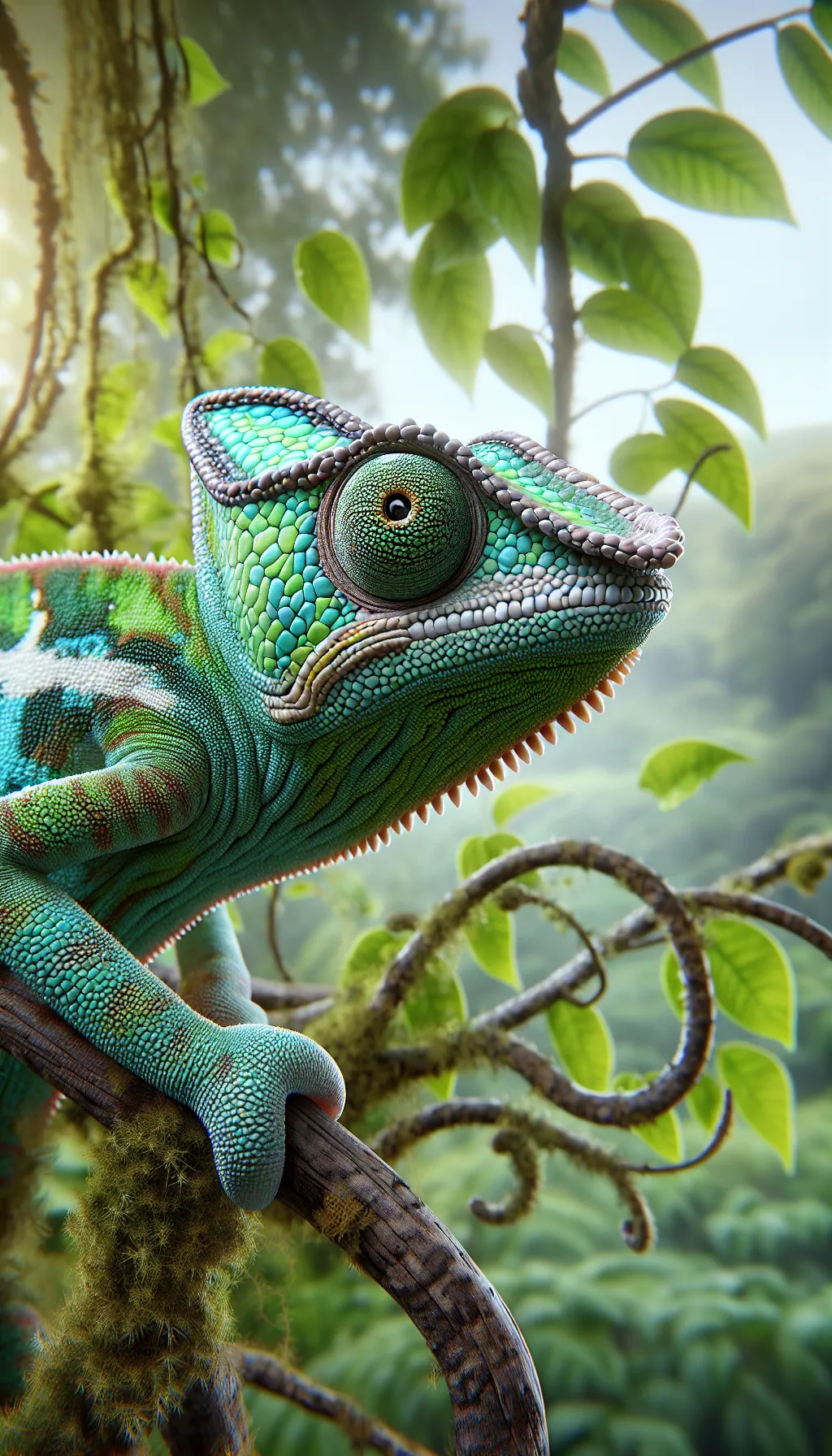
| Parson's Chameleon | |
|---|---|
| Size | Up to 27 inches (68.5 cm) |
| Weight | 1-2 pounds (0.45-0.9 kg) |
| Speed | 3mph (4.8km/h) |
| Key Strength | Camouflage |
| Biggest Weakness | Slow movement |
| Scientific Name | Calumma parsonii |
| Family | Chamaeleonidae |
| Habitat | Forests |
| Geography | Madagascar |
| Diet | Insects, small birds, and small mammals |
| Lifespan | 8 years - 10 years |

The Parson's Chameleon
The Parson's Chameleon is one of the largest chameleon species, known for its vibrant colors ranging from bright green to deep blue. It has large, independently rotating eyes, a long tongue used for catching prey, and a distinctive casque on its head. This species is native to humid rainforests in Madagascar.
Fun Fact: The Parson's Chameleon has the ability to change its color to blend in with its surroundings, helping it to both camouflage from predators and sneak up on prey.
| Parson's Chameleon | |
|---|---|
| Size | Up to 27 inches (68.5 cm) |
| Weight | 1-2 pounds (0.45-0.9 kg) |
| Speed | 3mph (4.8km/h) |
| Key Strength | Camouflage |
| Biggest Weakness | Slow movement |
| Scientific Name | Calumma parsonii |
| Family | Chamaeleonidae |
| Habitat | Forests |
| Geography | Madagascar |
| Diet | Insects, small birds, and small mammals |
| Lifespan | 8 years - 10 years |
Parson's Chameleon Matchups
We use AI to simulate matchups between the Parson's Chameleon and other animals. Our simulation considers size, strength, and natural predatory behaviors to determine the most likely outcome.

Can't find the Matchup you want?
Create Your Own MatchupParson's Chameleon: Diet, Predators, Aggression, and Defensive Behaviors
What do Parson's Chameleons eat?
Parson's Chameleons primarily feed on a diet of insects, such as crickets, cockroaches, and grasshoppers. They are also known to consume small birds, rodents, and even other chameleons in the wild. These chameleons have a long sticky tongue that they use to catch their prey by shooting it out quickly.
Do Parson's Chameleons have any predators?
Yes, Parson's Chameleons have predators in their natural habitat, including birds of prey, snakes, and small mammals. They are vulnerable to these predators due to their relatively slow movements and the bright colors of their bodies, which can attract attention.
Are Parson's Chameleons aggressive?
Parson's Chameleons are not known to be aggressive towards humans or other animals unless provoked. They are generally solitary creatures and prefer to stay camouflaged and hidden in their surroundings rather than engage in aggressive behavior.
Do Parson's Chameleons fight?
Parson's Chameleons may engage in territorial disputes with other chameleons, especially males during breeding season. These disputes involve physical displays such as puffing up their bodies, hissing, and even grappling with each other. However, these fights are typically non-lethal and do not result in serious injuries.
How do Parson's Chameleons defend themselves?
Parson's Chameleons have several defense mechanisms to protect themselves from predators. They can change the color of their skin to blend in with their surroundings, making them harder to spot. They also have the ability to inflate their bodies to appear larger and more intimidating. If threatened, they may hiss or lunge towards their attacker in an attempt to scare them off.
What is the biggest weakness of a Parson's Chameleon in a fight?
The biggest weakness of a Parson's Chameleon in a fight is its relatively slow movement and lack of agility compared to some of its predators or rival chameleons. While they have defensive mechanisms such as camouflage and puffing up their bodies, their limited speed and mobility can make them vulnerable in a physical confrontation.
Fun Fact: Unlike most chameleons, the Parson's Chameleon does not have the capability to change colors rapidly; instead, its color changes occur over long periods of time as a response to mood, temperature, and lighting.
Fun Fact: The Parson's Chameleon has a prehensile tail, which allows it to grip onto branches for stability while moving through the forest canopy.



